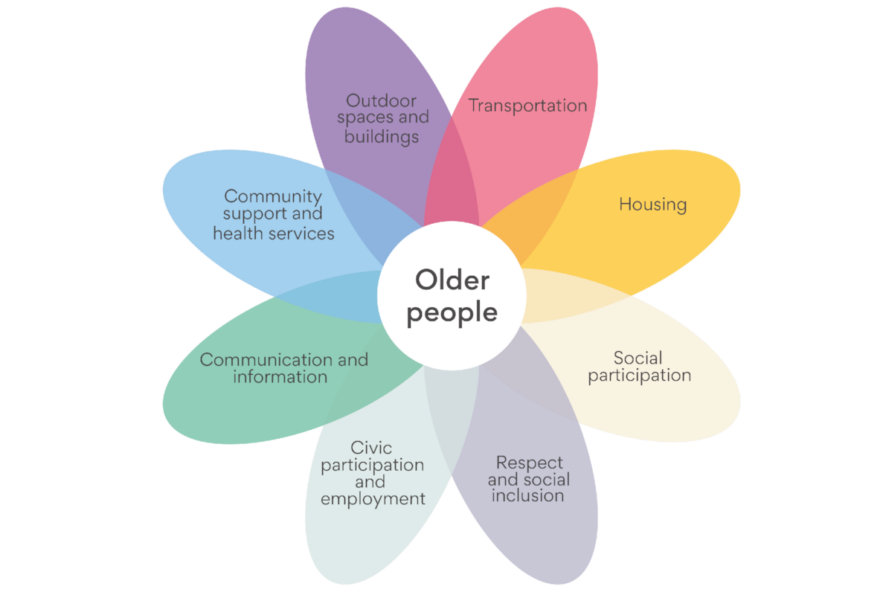The outside environment and public buildings have a major impact on our mobility, independence and quality of life as we age. Outdoor spaces and buildings in an age friendly community will strive to be safe, accessible and comfortable for people of all ages.
What are the key components of a community that supports older people?
Creating an age friendly community
An age friendly community is based upon a framework of eight areas (domains) captured by the World Health Organisation (WHO), that cities and communities can address to improve structure and services that meet the needs of older people and all of us as we age.
We’ve summarised the domains below to help explain areas that we are looking to raise awareness of as part of our Age Friendly Network. As you read through the explanations, take a look at the WHO diagram above to see how they all interlink.
-
Transport
-
Affordable, reliable and convenient transport options enable older people to get out and about and continue to do things that matter to them. Whether it’s going shopping, meeting friends or attending an appointment, good transport is essential to everyone.
-
Housing
-
The right housing and support can allow people to age comfortably and safely, in their community.
Poor housing can have a huge impact on health, but when housing is considered as part of the age friendly approach, it can help to maintain or improve physical and mental wellbeing, as well as social connections.
-
Civic participation and employment
-
Age friendly communities look to provide good quality options for people in later life to continue to contribute to their communities. Those options can include paid employment or voluntary work as well as being engaged in democracy.
Good quality volunteering has a measurable positive impact on mental health. And paid work can benefit wellbeing as well as finances. Yet often, the opportunities for these diminish with age.
-
Communication and information
-
Staying connected with events and people, and getting timely, practical information is important for all of us, especially as we get older.
Age friendly communities seek to ensure information is accessible for those with varying resources and abilities – for example people who don’t have English as a first language, are digitally excluded or have a sensory impairment.
-
Community support and health services
-
As the older population grows, the need for community support and health services grows too. Alongside accessible and affordable health care services, community support and physical activity opportunities are strongly connected to good health and wellbeing throughout life.
Some age friendly communities incorporate their financial inclusion work in this domain, acknowledging the huge impact that financial instability has on quality of life and health.
The United Nations and World Health Organisation working together
The United Nations Decade of Healthy Ageing (2021–2030) is a global collaboration to improve the lives of older people, their families, and the communities in which they live. The World Health Organization was asked to lead the implementation of the Decade in collaboration with the other UN organisations. The short film below sets out their development goals.



